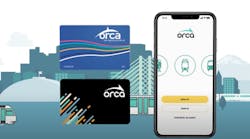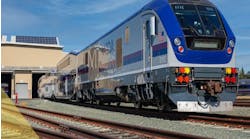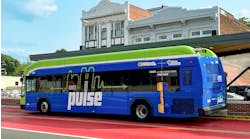King County Metro study shows benefits of using ORCA cards
A nine-month collaborative study led by King County Metro’s Transportation Demand Management Ridership Recovery Project showed ways in which paying with an ORCA card makes paying for public transit easier in the Seattle, Wash., area.
There were 767 people who participated in the study and were randomly assigned to receive either a “high-value” pre-loaded ORCA card or a “low-value” pre-loaded ORCA card. The “high-value” card was a $99 Adult ORCA card or a $54 for ORCA LIFT card. The “low-value” card was a $25 Adult ORCA card or a $10 ORCA LIFT card. Participants also received printed information in their preferred language about using the cards and had a discussion with an outreach worker about their plans to use and reload their card.
Study findings
The agency found several informative findings from the first 90 days of participants receiving their card.
Card usage and timing
- 45 percent used the ORCA card at least once.
- Participants with a bank account, credit card or debit card were less likely to use the card at least once.
- 14 percent used the entire value of the card.
- The average amount of time from receiving a card to first using it was 21 days.
- Participants who have used an ORCA card before were more likely to use the card for the first time more quickly.
- Participants who had not used an ORCA card before were more likely to take more rides using the card.
- Among participants who used the card’s entire value, it took an average of 48 days to do so.
- On average, participants used the card seven times.
Card reloading
- Five percent reloaded their card at least once. Of participants who did not reload their cards within the first 90 days, 66 percent said the reason was they still had funds on their card. The next most common reason was they were instead paying for transit with a human service ticket or another type of ORCA card.
- Among those who reloaded their card, they reloaded it an average of six times.
- Among those who reloaded their card, they reloaded their card for the first time after 43 days. Transaction amounts for reloads ranged from $2 to $135, with the majority being low-dollar amounts.
- Just over half of reloads were for $10 or less and 84 percent were for $25 or less.
Reloading on smartphone/website vs. ticket vending machine
- Of the 216 reload transactions, 108 were completed on the mobile app or website (including autoload) and 101 using ticket vending machines. Only seven transactions were completed using all other methods.
- Participants who had a smartphone were more likely to reload their cards at least once.
“High-value” vs “low-value” cards
- Participants with “high-value” cards were more likely to take more rides using the card.
- Participants with “low-value” cards were more likely to use the entire card value, use the entire value more quickly and reload more quickly.
Adult ORCA cards vs. ORCA LIFT cards
- Participants who received an ORCA LIFT card were more likely to take more rides and more likely to reload the card than participants who received an Adult ORCA card.
- Adult ORCA card users were more likely to use the card for the first time more quickly than ORCA LIFT card users.
Paying with cash vs. an ORCA card
Paying with cash may have decreased among participants. In the baseline survey, 350 out of 540 (65 percent) respondents reported they had paid for transit using cash only within the last 30 days. In the post-survey, 134 out of 165 (81 percent) respondents reported they had not paid for transit with cash since receiving their ORCA card.
Information and support
In the post-survey, a majority of participants rated the following three parts of the study as “a great deal” or “a lot” helpful:
- Understanding how to use an ORCA card
- Understanding how to reload an ORCA card
- Making a plan for how to use an ORCA card
Differences across language and race
- No notable differences were found among participants who spoke different languages.
- Participants who are white or Latinx were more likely to use the card at least once, to use the card’s entire value, to take more rides using the card and to take longer to reload for the first time than other participants.
King County Metro says lessons and recommendations from the study included enabling community partners to enroll people in reduced fare programs rather than refer them to other agencies, enhancing language access, expanding the number of ticket vending machines, increasing the use of visuals in communications, making it easier to enroll in ORCA LIFT, increasing the number and quality of community partnerships and improving future study methodologies.
King County Metro contracted two community-based organizations—the Chinese Information Service Center and ECOSS (formerly the Environmental Coalition of South Seattle) for the survey. The agency noted both organizations specialize in providing multilingual and multicultural resources, information and support to community members. ECOSS subcontracted with two additional organizations that supported outreach—Cham Refugees Community and Villa Comunitaria—and, together, the three organizations provided ORCA LIFT referrals to Public Health – Seattle & King County. The Center for Applied Behavioral Science at MDRC led project evaluation.
According to the agency, compared to paying with cash, ORCA cards allow for quicker boarding and seamless transit transfers between agencies and modes. Additionally, customers with disabilities, customers with lower incomes and seniors receive reduced fare automatically with an ORCA card, plus riders with very low incomes on certain government programs and all youth through age 18 can ride for free.




